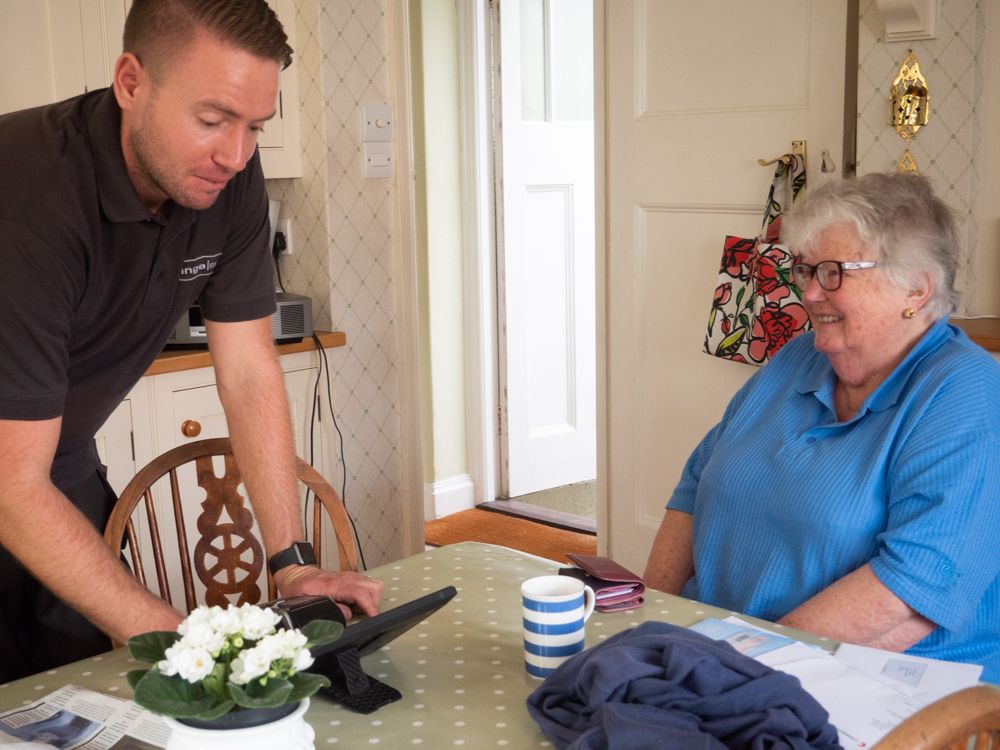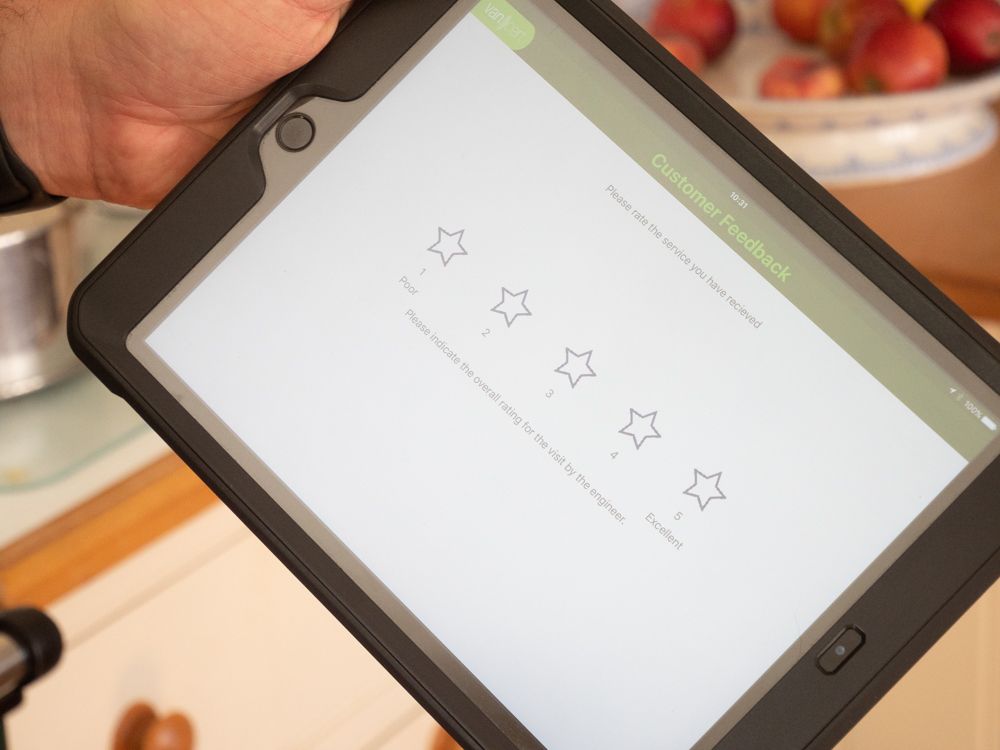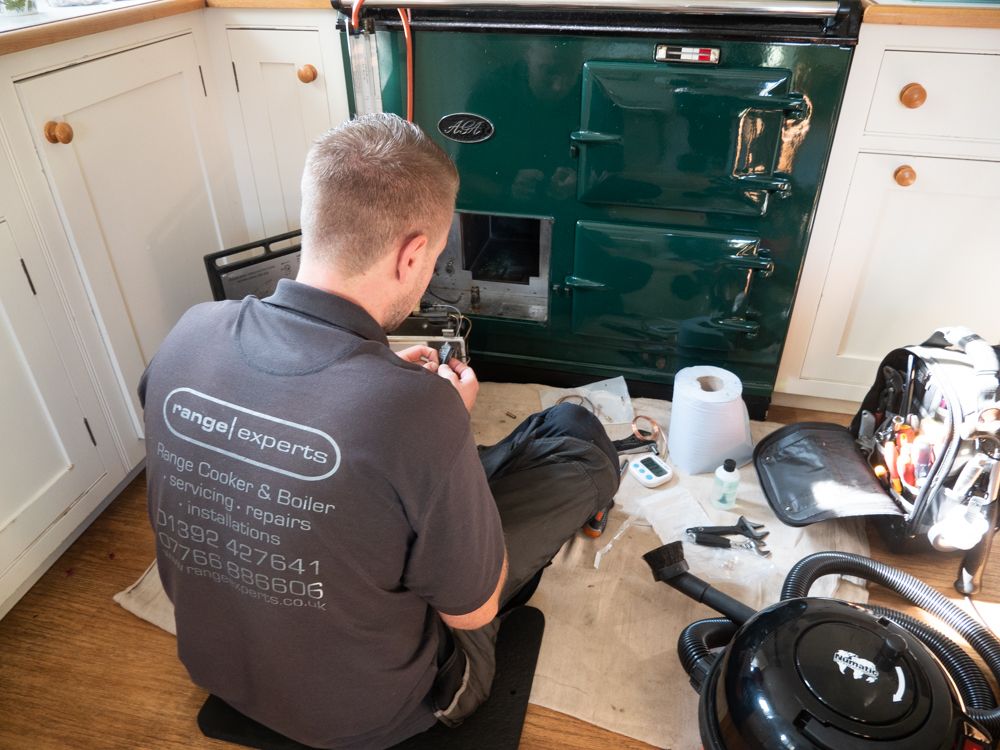Looking to rejuvenate the appearance of your cooker?
Range Experts offer a re-enamelling service that uses traditional and authentic methods to recolour, repair and even personalise your range cooker.
The enamelling process
A step-by-step process of the enamelling process.
step 1
Initial consultation
Email pictures of your Aga and list the parts you’d like refurbished, allowing for an estimate to be sent out to you.
Decide the parts to be re-enamelled.
Choose a colour from 22 standard hues.
Finalise when to complete the job.
step 2
Behind the scenes
All replacement parts are ordered in advance to our visit.
Replacement parts are re-enamelled into your chosen colour.
Each part is then quality assured.
Step 3
On the day
Our engineer arrives promptly.
On the day preparations will take place.
Replacement parts pre-enamelled will be fitted.
What our clients say
-
 MRS GIBBS
MRS GIBBSYou have been fantastic – we really appreciate all your help. You’ve gone above and beyond in helping us. Thank you! We’ll be recommending you to anyone who asks.
-
 Mrs Phillips
Mrs PhillipsThank you so much for sorting out my Aga so quickly and for your advice about the most efficient way to heat my hot water. I will definitely be in touch again next year for my annual service.
-
 E.M Capiner
E.M CapinerI have been using an AGA since 1970, and for it to be serviced I have no hesitation in recommending Carl Barnes who does an excellent job quietly and efficiently. I can confidently recommend him to all AGA users who appreciate good work that is well executed.
FAQ’s
The pre-enamelling ‘step-one’ phase will involve a consultation call with our engineer to discuss the requirements and colour options you would like.
The period of preparing in advance the replacement panels can be anytime up to a couple of weeks.
On the actual day of fitting, it will usually take no longer than 1 day, however, some jobs may take up to 2 days to complete.
However, these are estimations based upon a generic job. Clearly the time taken will vary depending on the requirements of the client and cooker.
The only thing you’ll have to do in advance is liaise with our engineer to discuss your requirements and colour preferences and ensure the appliance is turned off at least 24 hours before hand so that it’s cold for our engineers to work on. On the actual day of fitting, we want to ensure we do not cause inconvenience to your lifestyle, so we would recommend you choose a day when you’ll not require the use of the cooker.
Yes! You can choose to re-enamel individual panels, hobs or switches. Discuss with our engineer your requirements and he can advise you on the best way forward.
Different surfaces require different cleaning methods:
Enamel range cookers and enamelled pan supports – The easiest way to keep your range cooker looking like new is simply to wipe it off with warm soapy water after every use to avoid things burning on in the first place. Use a specific enamel cleaner such as Astonish (that I keep in stock) for more stubborn marks.
Stainless steel range cooker surfaces – Always remove fingerprints as soon as you make them, otherwise they will become harder to clean off. Wipe over with a clean cloth wrung out in hot soapy water, then polish off all water with a soft dry cloth. The E-cloth developed for stainless steel is great for this – you can buy it from some supermarkets, electrical retailers and environmentally-friendly product websites. Remove stubborn marks using a stainless steel cleaner, or rub in a few drops of baby oil to restore stainless steel finishes. Don’t use cooking oils, as they contain salts which can damage the metal. Avoid wiping down with wire wool or other scrubby pads, which can scratch the surface.
Griddles for range cookers – Cast iron griddles can build up a non-stick surface from the oil you use in cooking – you don’t want to get rid of this by washing them in detergent or dishwasher. Scrub the griddle while it’s still warm with hot tap water and dry it immediately. Remove stubborn residues by scrubbing with salt and olive oil.
Always read the manufacturer’s instructions for their advice before starting work.
On enamelled surfaces: Wipe the affected area with a damp cloth wrung out in warm water and mild detergent. Remove obstinate marks using a paste or cream cleaner, rubbed gently so as not to damage the surface. These features can make cleaning easier:
Pyrolytic self-cleaning programs – Range cookers with pyrolytic self-cleaning programs super-heat to more than 400°C and incinerate oven waste. All that’s left at the end of the program is ash which you can sweep away.
No two re-enamelling jobs are the same, because of the varying requirements, colour choices, timeframes, and so on.
It is best to offer a price when we know more about the extent of your needs.


